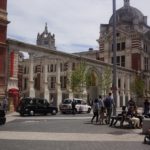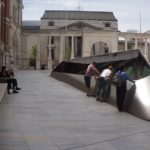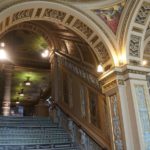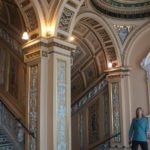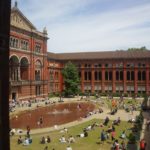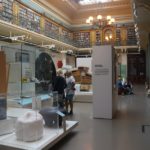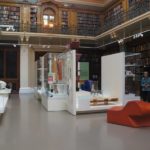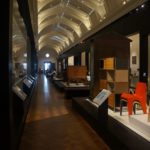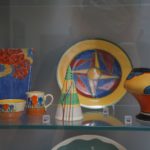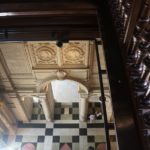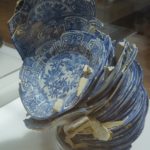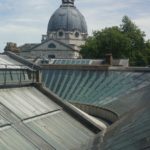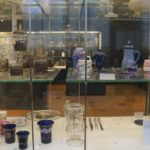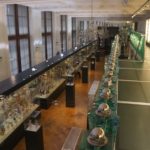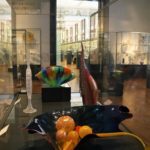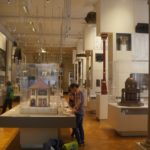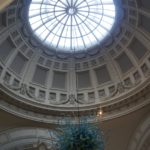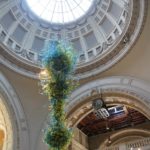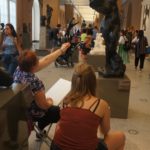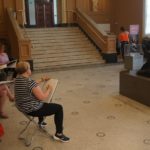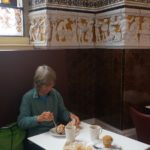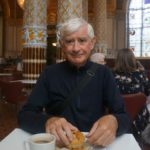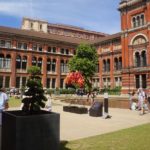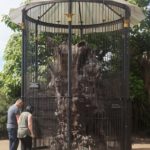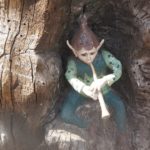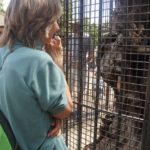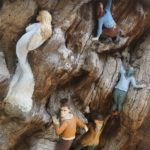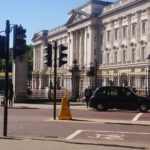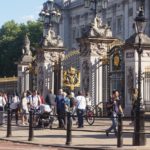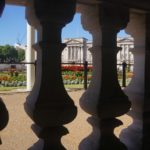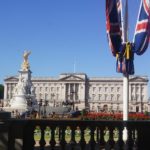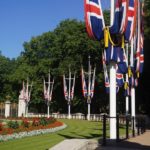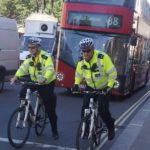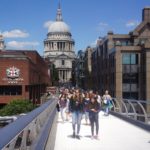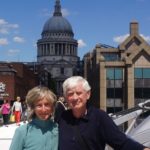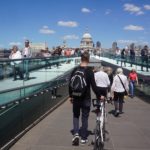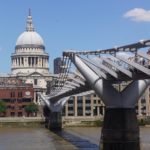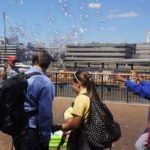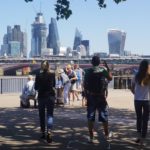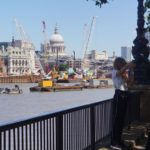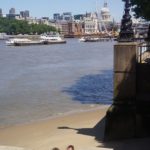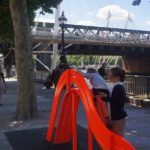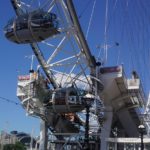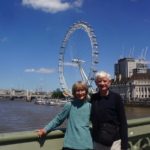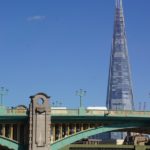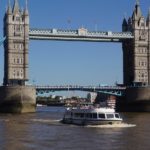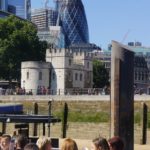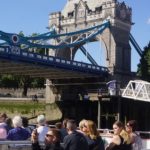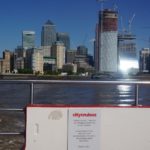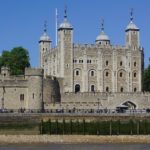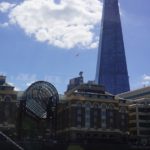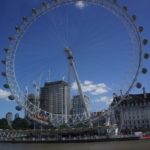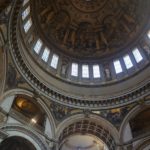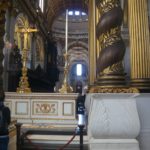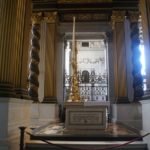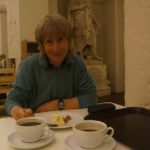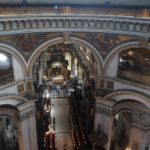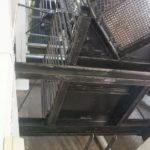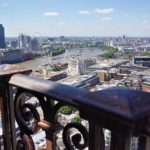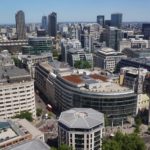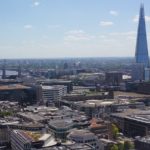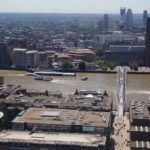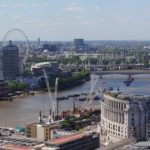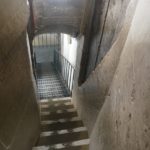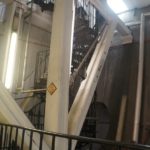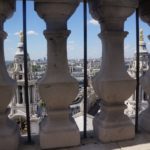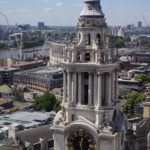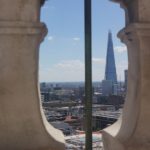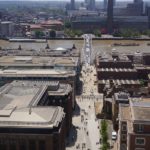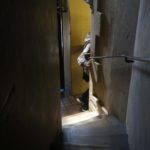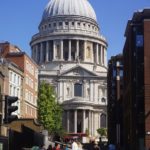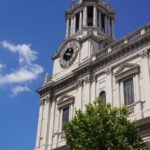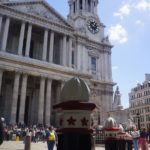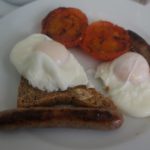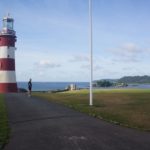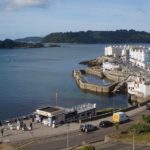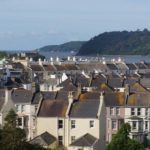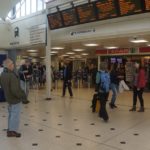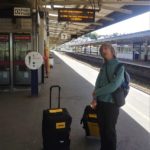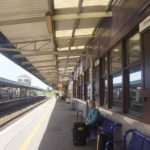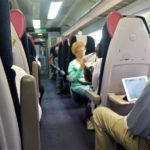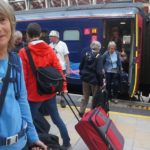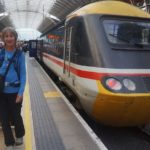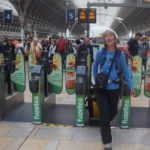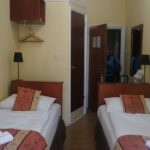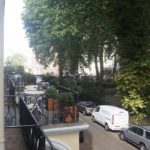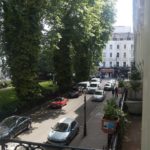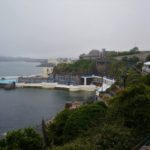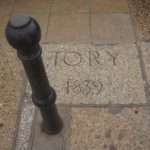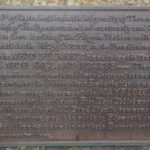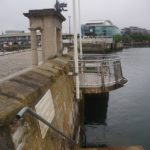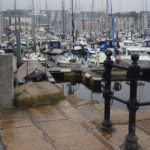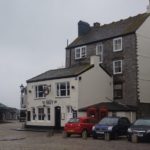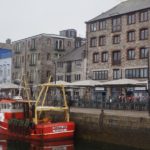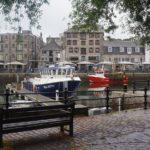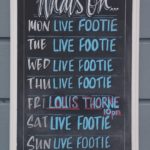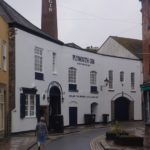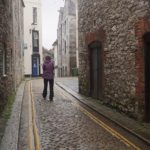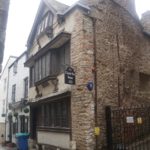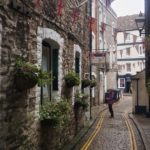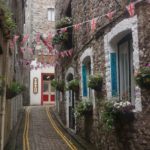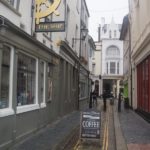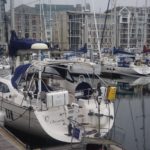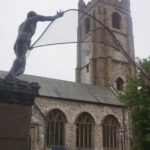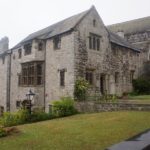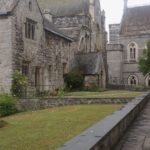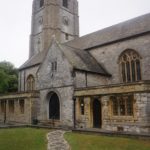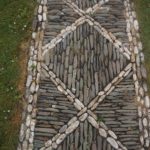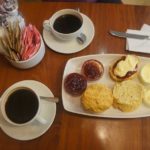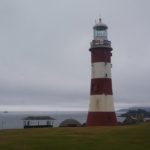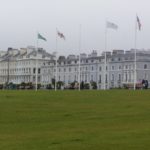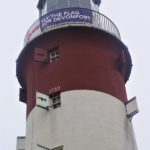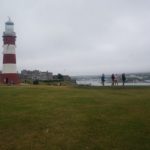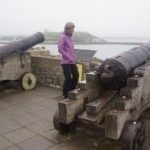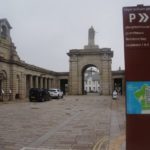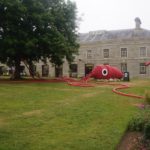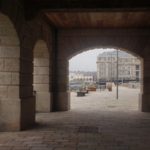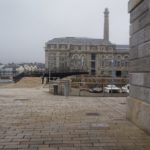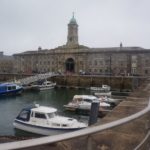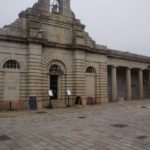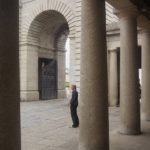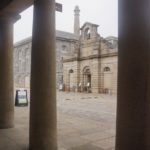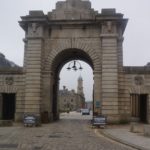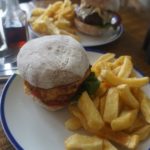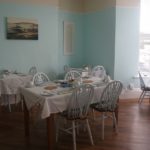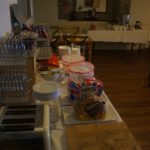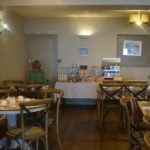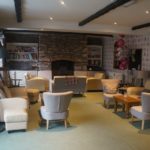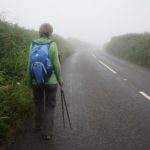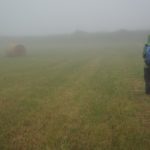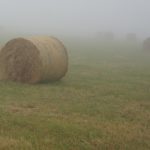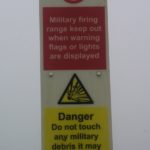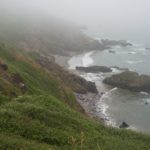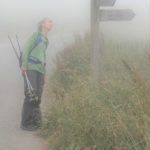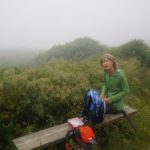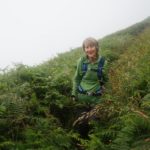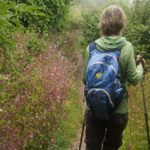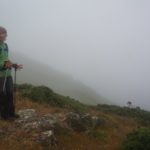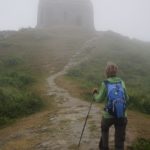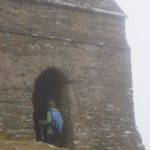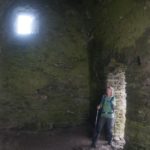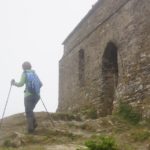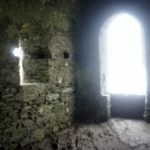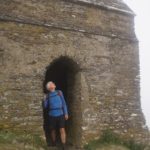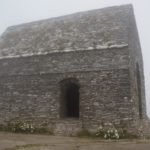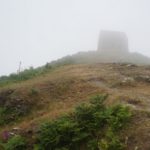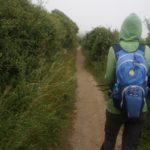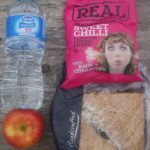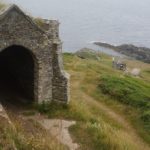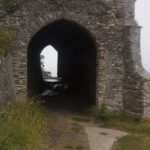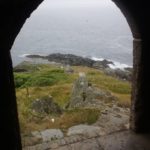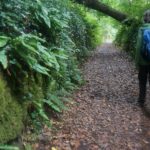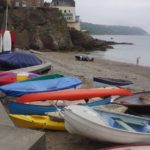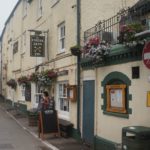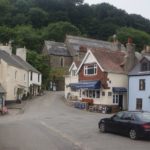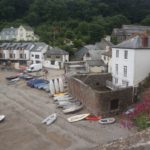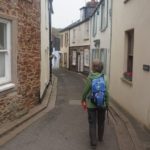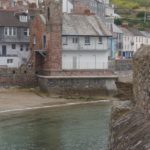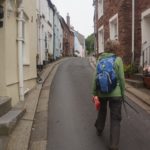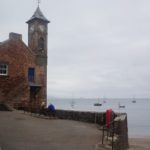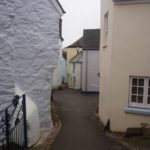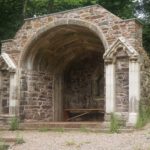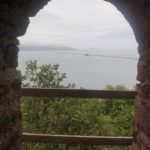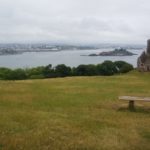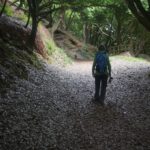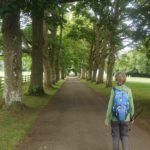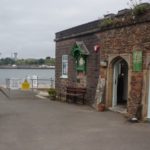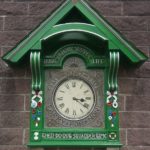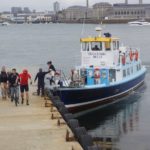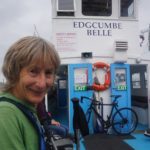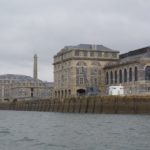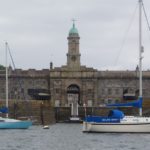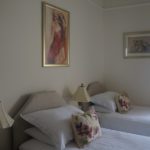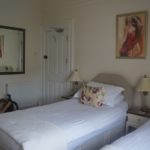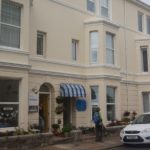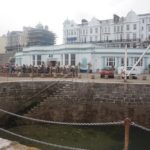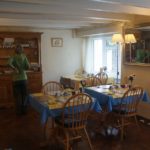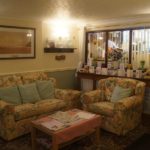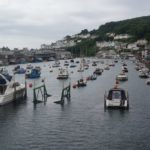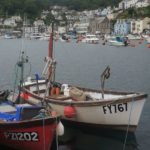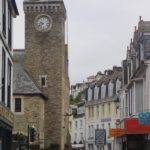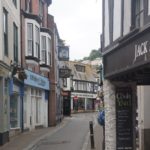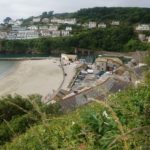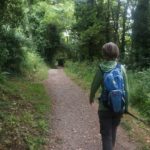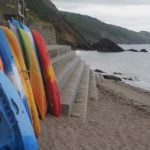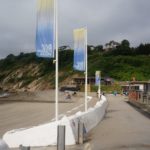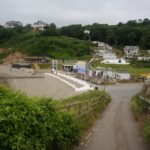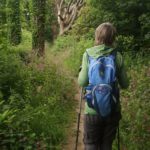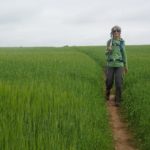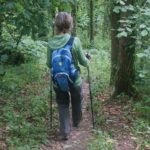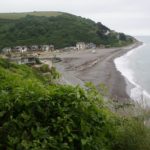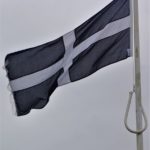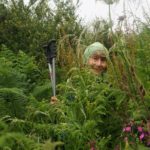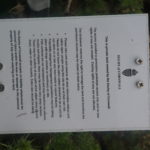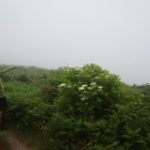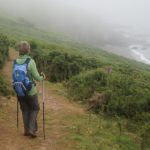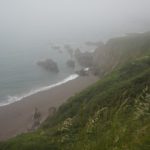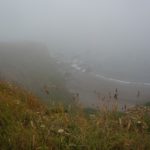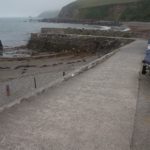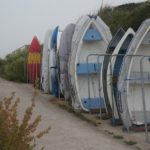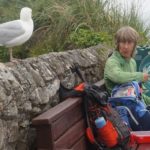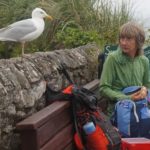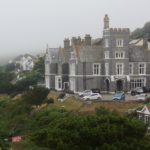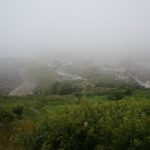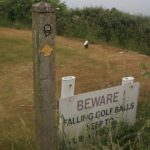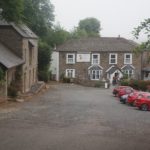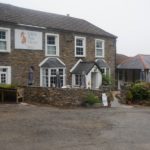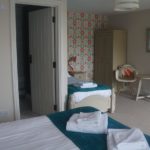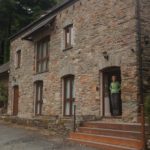South West Coast Path – An Overview
We walked over 500 kilometres of the SWCP, starting in Westward Ho! (Devon), walking the entire coast of Cornwall and finishing in Plymouth, back in Devon. This is about half the1000 km of the total SWCP which starts in Minehead and finishes in Poole.
The walk is classified as strenuous and from our experience for the section we walked we would say it is 5% easy, 45% moderate, 40% strenuous, 10% severe. The coast is not flat and every day, several times, you climb from sea level to the top of cliffs and headlands, and back down again. The highest cliff we climbed was 230 metres above sea level.
We walked for thirty days at an average of about 17 km per day. Our longest day was 27 km and our shortest day was 8 km. There are many, many places to get accommodation and food so you can vary the length of each day to suit your ability and the time you have.
We walked in late spring and early summer and had very good weather most of the time. Very little rain and a few days of mist and low cloud. Not too hot with temperatures in the late teens and no strong winds just gentle sea breezes. There had been very little rain in early spring so the track was mostly dry and areas that would be muddy and boggy in the wet were hard and bone dry.
This is a well- formed path mostly on dirt but also on sandy and stony beaches, sand dunes, tarmac roads, farm roads, grassy fields, cobblestones, concrete paths, rocky outcrops, and boardwalks. The path gets a lot of use and so it is clearly visible. The confusing thing is that there are also many other public paths joining and criss-crossing the SWCP so you have to keep your wits about you to stay on the correct route. There are also hundreds of farm gates, kissing gates, bridges and stiles to negotiate and thousands of steps to climb.
A lot of the path runs along the edge of cliffs and in many places the cliffs are crumbling or unstable and have slipped away. In most cases there are signs and temporary fences and the path is diverted, often only a few metres, inland around the dangerous area. Some diversions are longer and the longest we had added an extra 4 km to the length of the stage. The path does tend to religiously follow the coast and many times a short cut could have been taken to bypass a headland.
Signage is generally very good. The SWCP is a National Trail and has been a continuous path since 1978 so it is well established. Signs are usually timber, pointing in the direction to go, say ‘Coastal Path’ and give the miles to the next village. In addition, at junctions or where there are other public paths crisscrossing there are timber posts with a yellow arrow and an acorn (the National Trail symbol) showing the way. Inevitably a few signs or posts are missing or buried in hedgerows but if you always keep the sea on one side of you (left or right depending on whether you are going north to south or vice versa) and take the path closest to the coast (but not the one-way paths down to isolated beaches), you will never get lost. The hardest places to navigate through are the large towns and cities.
We used two volumes from the ‘Trailblazer’ series: Exmoor & North Devon Coast Path, SWCP Part 1 Minehead to Bude, and Cornwall Coast Path SWCP Part 2 Bude to Plymouth. These are very detailed with large scale maps (1:20,000) showing almost every gate, bench, set of steps, stone wall, etc for every inch of the path. They also contain walking times, info on tricky junctions, places to stay, places to eat, points of interest and detailed public transport information. They only show what is happening right on the coast path and maybe a kilometre inland.
We also used two Harvey National Trail Maps: SCWP 1 Minehead to St Ives and SWCP2 St Ives to Plymouth. These are 1:40,000 and also have a ton of information but give a much bigger picture of where you are in relation to roads, inland towns etc, away from the coast.
We didn’t take smartphones but you can use GPS to track exactly where you are and where to go. The Trailblazer books have way GPS marker points you can tick off as you go.
The SWCP is maintained by volunteers and the local councils so the standard varies quite a bit. For us the biggest issue was from Lizard to Plymouth which has a subtropical climate and very lush vegetation. Some of the track was freshly trimmed with an edge trimmer but other parts were shoulder high in grass, wild flowers, bracken, brambles, thistles and nettles. When this is wet from dew, mist or rain you get saturated and stung.
The SWCP also uses rights of way over farms so you often will be sharing a field with sheep, cows or steers, horses and ponies. This is not an issue and they seem content sharing their territory with lots of walkers. We didn’t encounter any mosquitos, sand flies, biting ants etc.
Everyday there are interesting things to see, including iron age hill forts, castles, ruins, churches and chapels, lighthouses, coastguard watch lookouts, lifeboat stations, memorials, plaques, statues, fortifications (ancient, old and new), mines, mining engine houses, holiday parks, houses, cafes, pubs, radar installations, navigation towers, military areas, airports, golf courses, harbours (large and small), villages, beaches, estuaries, rock stacks, rock arches, sink holes, emerald seas ,seals, dolphins, sea birds, etc.
We had been hoping this would be a social walk like the Camino in Spain but we met nobody who was doing a walk on the SWCP as long as us. We became friendly with a few people who were walking for a few days or up to about a week. Occasionally there are a lot of people on the path but these are day walkers or dog walkers and are usually close to beaches, towns or villages or at car parks near particular points of interest. There are more people about on weekends, bank holidays and school mid term breaks. Usually we walked in splendid isolation.
There are lots of swimmable beaches and all the ones near villages or car parks have life guards. Surfing and swimming is hugely popular in Cornwall. Dangerous beaches are clearly sign posted. In late spring/early summer the water is cold, about 11°C and almost everyone in the water wore a wet suit. We swam only once, on our shortest walking day. We didn’t get hot enough to think it was worthwhile to stop, get changed, swim, get dried, get sand off everything, and carry on.
We had to research each day to see if we would be able to get food and drink along the way. Usually there were several options but a few days nothing was available. In this case we bought supplies at a shop before we left in the morning or if we couldn’t do this the B & B or pub owner would make us a packed lunch (£5 – £8 each). Many villages and beaches have seasonal cafes set up only for the summer. All the villages and most popular beaches had clean, well maintained, male and female (not all gender) public toilets. At about two thirds of these you have to pay to pee, so keep a stash of 20 pence coins.
All the SWCP we walked was well serviced by public transport. Just about every village was on the route of either one or both of two bus companies that operate in Cornwall. A lot of walkers we met would drive to a village, walk say 10 or 20 kms then catch a bus back to their car. The bigger towns like Newquay, St Ives, Penzance, Plymouth are also on the train system. Pretty much everywhere you could get a taxi. The nature of the SWCP means that many ferries must be used to cross estuaries. The smaller ferries are often seasonal (end of May to mid Sept) and dependant on the weather and tides. The landing points for some ferries also changes with the state of the tide. Information on trains, buses and ferries was readily available.
We stayed in B & Bs and small three star hotels. These had all been pre-booked by Macs Adventure and varied from homes with two guest rooms to hotels or inns with up to ten guest rooms. All were very comfortable, some luxurious. Locations were often good, very close or sometimes right on the path, but a few were about 2 or 3 kms away which made for some extra walking each day. They all had excellent breakfasts of juice, cereal, porridge, yoghurt, tea, coffee, toast and a choice of cooked breakfasts – you didn’t have to eat ‘full English’. Of the 33 places we stayed only one did not have excellent free wifi.
Food on the SWCP is great if you eat fish or sea food. Menus dominated by fish are natural for an area whose history and livelihood is so tied to the sea but for us who are not so keen on sea food the alternatives were a bit limited – burgers, lasagne, curries, steak and ale pie. Vegetables were hard to come by, everything came with mauve cole slaw or insipid salads, and chips. Sunday was the best day, everywhere there was a carvery and vegetables.
Overall this is a fantastic walk. Hard work but very rewarding, on a superb coastline with a huge variety of history, wildlife, geology and scenery.


